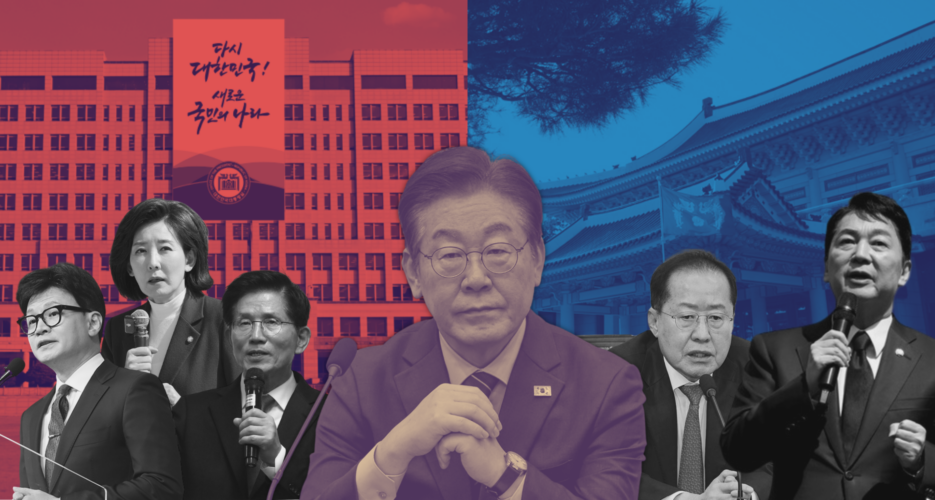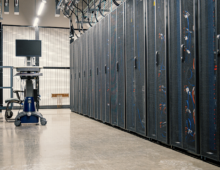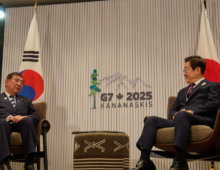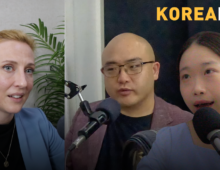|
Analysis South Korea’s presidential office faces relocation fight before electionLegal hurdles, symbolism and Yoon’s martial law fuel calls to move top office from Yongsan to Blue House or Sejong City Joon Ha ParkApril 18, 2025  A collage of South Korean presidential hopefuls, including People Power Party (PPP) candidates Han Dong-hoon, Na Kyung-won, Kim Moon-soo, Hong Jun-pyo and Ahn Cheol-soo, alongside Democratic Party (DP) frontrunner Lee Jae-myung with the Yongsan Presidential Office (left) and the Blue House (right). | Image: People Power Party, Na Kyung-won, Kim Moon-soo, Korea Pro, Democratic Party of Korea, ROK Presidential Office, Cheongwadae Foundation, edited by Korea Pro The question of where South Korea’s presidential office should be located has reemerged as a divisive political issue in the lead-up to the June 3 presidential election, with candidates proposing a range of relocation plans in response to sustained public and institutional backlash against the current Yongsan compound. Initially relocated from the Blue House — South Korea’s traditional seat of power — to the defense ministry’s compound in Yongsan by former President Yoon Suk-yeol in 2022, the current presidential office has since been plagued by security concerns and associated with Yoon’s martial law declaration, which have reignited calls to move the executive branch once again. Presidential contenders have since proposed relocating the office back to the Blue House or establishing a new site in Sejong City, 75 miles south of Seoul. YONGSAN UNDER FIRE From the outset, Yoon’s relocation of the executive branch to Yongsan drew heavy criticism. The decision was executed without a formal transition committee, bypassing institutional review and logistical planning. Yoon justified the move as an effort to open the presidency to the public, but observers argue the lack of consultation and planning severely undermined its credibility. Security concerns have only grown since. Critics warned early on that proximity to U.S. military facilities made the new location vulnerable to foreign surveillance. These fears were validated in April 2023, when leaked U.S. intelligence documents revealed American monitoring of internal South Korean security deliberations, reportedly collected through signals intelligence. “While the U.S. has bases around the world, co-locating a presidential office near one is highly unusual and undermines strategic autonomy,” said Shin Yul, a political science professor at Myongji University.  Then-President-elect Yoon Suk-yeol briefs reporters on the plan to relocate the presidential office to Yongsan, March 20, 2022 | Image: 20th Presidential Transition Committee A series of subsequent breaches further deepened doubts about Yongsan’s fitness. In Dec. 2022, a North Korean drone violated a no-fly zone near the presidential compound. The military initially denied the breach but later confirmed the incident, prompting criticism over air defense vulnerabilities. North Korean trash balloons later landed on the compound in mid-2024, carrying anti-Yoon propaganda and highlighting the site’s psychological and physical exposure. “It’s not a coincidence that airspace vulnerabilities have worsened since the move,” Shin added. Observers have also raised concerns about the compound’s symbolic and institutional impact. Jumin Lee, a former ROK Air Force officer and trial attorney based in Los Angeles, noted that the relocation has blurred the line between civilian and military spheres. “The physical proximity between the two institutions may have encouraged some in the military to prioritize loyalty to the president over loyalty to the constitution,” Lee said, referring to the number of senior military officers who had attempted to enforce Yoon’s martial law decree. He further argued that Yongsan failed to meet the original justification for abandoning the Blue House. “Regardless of its practical advantages, Yongsan is now inextricably tied to Yoon Suk-yeol and his perceived subversion of democratic norms,” Lee said. “Any incoming administration will likely feel political pressure to move simply to create a symbolic break.”  Democratic Party presidential hopefuls Lee Jae-myung, Kim Kyung-soo and Kim Dong-yeon, April 16, 2025 | Image: Democratic Party of Korea CANDIDATES SPLIT ON PLANS Presidential candidates are divided over whether to keep the Yongsan office, return to the Blue House or move to Sejong City. All major contenders in the main opposition Democratic Party (DP), including frontrunner Lee Jae-myung, Kim Dong-yeon and Kim Kyung-soo, have pledged to relocate the presidential office to Sejong City. Lee has also promised to build a new National Assembly building in Sejong during his term “after reaching social consensus,” reviving an unfinished vision from former President Roh Moo-hyun. Nevertheless, he did not specify a timetable. Senior DP lawmaker Kim Min-seok has argued that Yongsan’s association with alleged martial law planning in Dec. 2024 makes it politically untenable. “The public is unlikely to support the continued use of the Yongsan office,” he said. Some candidates from the ruling People Power Party (PPP), such as Hong Jun-pyo and Ahn Cheol-soo, support a return to the Blue House, with Ahn suggesting a hybrid model that balances public access with official functions not unlike the White House. Others in the PPP, including former party leader Han Dong-hoon, favor retaining the current location, while former labor minister Kim Moon-soo and lawmaker Na Kyung-won have called for a constitutional review before any changes are made. Despite the political momentum, experts remain skeptical that any candidate will be able to execute a full relocation within the next term. “It would be physically difficult to identify and prepare a new location before the next term begins,” Shin told Korea Pro. “Restoration and security retrofitting would be a massive project,” Shin said. “It’s not just about moving furniture. It’s rebuilding a command center from scratch.”  Then-South Korean President Moon Jae-in announces his pick for prime minister at the Blue House press room, Dec. 17, 2019 | Image: Moon Jae-in via Facebook LIMITS OF THE BLUE HOUSE While reopening the Blue House as the seat of government is an option, practical challenges loom. Since its transformation into a public museum in 2022, the compound has hosted tens of thousands of monthly visitors and has become a symbol of post-presidential transparency. DP lawmaker Kim Byung-joo has suggested the next president consider returning, despite his party’s emphasis on moving to Sejong. However, experts note that restoring the Blue House would require substantial upgrades. “The Blue House is now open to the public, functioning as a historical and civic space,” said Benjamin A. Engel, assistant professor of Korean Studies at Dankook University. “More importantly, the security overhaul required to turn it back into a presidential office would be enormous. You’d need bug sweeps, infrastructure rebuilds, new communication systems — it wouldn’t be a simple reactivation.” “Whatever the new president decides, it must involve meaningful consultation with civil society, security experts, urban planners and political stakeholders,” he said. Shin concurred, noting that even with existing defensive advantages due to terrain and military support, reactivation would take roughly a year.  South Korean honor guards put on a show near the Blue House, May 2017 | Image: ROK Ministry of Culture, Sports and Tourism (CC BY-NC-SA 2.0) SEJONG POSES CHALLENGES Progressive candidates’ calls to ultimately relocate the executive branch to Sejong City face steep legal and logistical obstacles. The most significant hurdle stems from a 2004 Constitutional Court ruling that struck down then-President Roh Moo-hyun’s original plan to move the capital. The court ruled that Seoul’s status as the national capital is protected by customary constitutional law, requiring a formal constitutional amendment to shift core state functions elsewhere. “Under current Constitutional Court interpretations, relocating the capital — or the presidential office — outside of Seoul would require a constitutional amendment,” Shin said. “That’s a complicated and time-consuming process, not a mere administrative shift.” Even if the legal barriers were resolved, practical obstacles persist. The Administrative City Construction Agency has set aside a 580,000-square-meter site near the Sejong Government Complex for a future presidential office, but construction will not be completed before 2027. Sejong’s accessibility also remains a concern. Shin noted that only Seoul qualifies as a “gateway city” with sufficient global connectivity. “There’s a concept in urban sociology called a ‘gateway city’ — a hub with direct global access, particularly through international airports,” Shin said. “Only Seoul fits that definition. Expecting foreign dignitaries to land at Incheon and drive several hours to Sejong is simply unrealistic.” Attorney Lee also questioned the sincerity of relocation promises. “No president really wants to live in Sejong,” he said. “It’s a compromise that satisfies neither symbolic needs nor practical preferences.” “That’s a popular slogan around election time, but it rarely translates into real action,” Lee added. “There’s a reason the National Assembly, the foreign ministry and the defense ministry are still all in Seoul. No one in power wants to actually move.” Engel warned that repeated relocations risk undermining institutional continuity. “In the U.S., the White House isn’t just a working space — it’s a national symbol,” he said. “Moving the South Korean presidential residence too often undermines that same kind of national continuity and symbolism.” RELOCATION REMAINS UNCERTAIN While presidential candidates differ on whether to return to the Blue House, remain in Yongsan or start anew in Sejong, all face legal, logistical and symbolic constraints that make relocation difficult to achieve within a single five-year term. With public trust shaken by the hasty execution of Yoon’s initial move, subsequent security risks at Yongsan that continue to draw scrutiny and the former president’s martial law declaration, experts stress that any future change must be deliberate, broadly consulted and anchored in long-term planning. Edited by John Lee The question of where South Korea’s presidential office should be located has reemerged as a divisive political issue in the lead-up to the June 3 presidential election, with candidates proposing a range of relocation plans in response to sustained public and institutional backlash against the current Yongsan compound. Initially relocated from the Blue House — South Korea’s traditional seat of power — to the defense ministry’s compound in Yongsan by former President Yoon Suk-yeol in 2022, the current presidential office has since been plagued by security concerns and associated with Yoon’s martial law declaration, which have reignited calls to move the executive branch once again. Get your
|
|
Analysis South Korea’s presidential office faces relocation fight before electionLegal hurdles, symbolism and Yoon’s martial law fuel calls to move top office from Yongsan to Blue House or Sejong City  The question of where South Korea’s presidential office should be located has reemerged as a divisive political issue in the lead-up to the June 3 presidential election, with candidates proposing a range of relocation plans in response to sustained public and institutional backlash against the current Yongsan compound. Initially relocated from the Blue House — South Korea’s traditional seat of power — to the defense ministry’s compound in Yongsan by former President Yoon Suk-yeol in 2022, the current presidential office has since been plagued by security concerns and associated with Yoon’s martial law declaration, which have reignited calls to move the executive branch once again. © Korea Risk Group. All rights reserved. |











